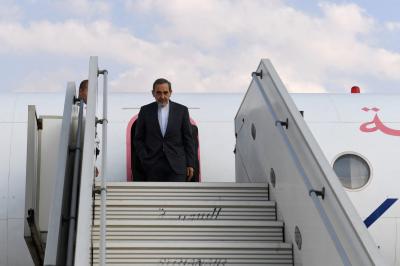Since the establishment of Israel—viewed in Arab literature as a “project” and in international terms as a state recognized by the United Nations—the phrase “Greater Israel” has echoed as a dangerous biblical ambition. It first appeared in the imagination of Theodor Herzl, founder of the Zionist movement and convenor of the 1897 Basel Congress. It later resurfaced in the rhetoric of successive Israeli leaders and within the doctrine of global Zionism.
The Old Testament itself is divided on the geographic expanse promised to the descendants of Abraham. The Book of Genesis spans much of the Eastern Mediterranean, extending to Turkey and the Arabian Gulf. The Books of Deuteronomy and Ezekiel, however, limit it to the lands between the Euphrates and the Nile. Still, the “Abrahamic covenant” remains an enduring theme for Israeli leaders and hardliners—most recently Prime Minister Benjamin Netanyahu, who revived the “Greater Israel” slogan only weeks ago.
The central question now facing Palestinians, Arabs, and the international community is: How realistic is this project, and what are its chances of materializing in military, diplomatic, geographic, and demographic terms? Opinions diverge. Some argue that “Greater Israel” is already unfolding, citing developments in Lebanon, Syria, Gaza, the West Bank, and even Qatar. Others dismiss it as unfeasible, viewing Israeli expansion instead as a search for secure borders under the familiar wartime notion of “living space.”
Why the Project Lacks Realism
Three key considerations lend weight to the latter view.
First, global legitimacy. Unlike the broad acceptance that facilitated the creation of “Lesser Israel” through the 1948–49 partition of Palestine, the world today is far from united behind a “Greater Israel.” On the contrary, international, Arab, and Islamic opposition to Netanyahu’s policies—especially in Gaza and the West Bank—is mounting. Even Netanyahu himself has admitted Israel’s growing diplomatic isolation. At the same time, France and Saudi Arabia are pushing for a two-state solution, as underscored during the second session of the UN General Assembly in New York.
Second, demographic and geographic obstacles. The idea of displacing more than 50 million people across Egypt, Palestine, Jordan, Iraq, Syria, Lebanon, and parts of the Gulf and Arabian Peninsula is implausible. Nor could Israel govern such a vast and diverse territory, even if it mobilized the entire global Jewish population—most of whom are unwilling to abandon their homelands for a risky and uncertain project. Indeed, many Israelis have already emigrated from today’s Israel to escape unending wars.
Third, the biblical promise itself. Leaving aside debates over the validity of the Abrahamic covenant or the contradictions between biblical accounts, it is hardly tenable to treat a three-thousand-year-old text as a binding charter for state-building. This is not blasphemy, but an appeal to reason and to modern political realities shaped by centuries of human experience. History moves forward, however unevenly, and no ancient promise can serve as a blueprint for today’s geopolitics.
Lessons from History
If ancient covenants were grounds for modern claims, Lebanon too could invoke biblical references—where it appears more than seventy times as “God’s sanctuary”—to demand territories it once held during the Phoenician era or under Emir Fakhreddine II in the 17th century. By that logic, Lebanon could press claims over Banias, Safed, swaths of Syria and Palestine, even Carthage in North Africa and Mediterranean shores as far as Gibraltar.
History, however, offers sobering lessons. The Ottoman Empire once stretched across the Middle East, North Africa, and into Europe and Russia, only to shrink back to its current borders. More recently, Iran boasted of controlling four Arab capitals and exerting dominance across the region, but today its influence is contracting toward its national boundaries.
A Dream, Not a Destiny
For all these reasons, the promises of the Torah will remain confined to scripture, while “Greater Israel” endures as a cherished but unrealistic dream among its proponents. Sacred texts, after all, use allegory and metaphor to guide believers—hell is not literally fire but a warning of damnation, heaven not rivers of milk and honey but an encouragement toward righteousness.
This is not heresy, but realism.
Please post your comments on:
comment@alsafanews.com
 Politics
Politics













